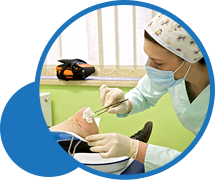
Problem wounds represent a significant and growing challenge in every healthcare system. The incidence and prevalence of these wounds are increasing in the population resulting in growing utilization of healthcare resources and money expended. Venous leg ulcers represent the most common lower extremity wound seen in ambulatory wound care centers with recurrences frequent and often bad outcomes. Pressure ulcers are common in patients in long term institutional care settings adding significant increases in cost, disability, and liability.
Foot ulcers in patients with diabetes represent over half of lower extremity amputations. In response to this challenge, specialized programs have emerged designed to identify and manage these patients using standardized protocols and a variety of new technologies to improve outcomes. Hyperbaric oxygen treatment (HBOT) has been increasingly utilized as an adjunct in many of these patients requiring optimized treatment and local wound care. The best evidence exists for treatment of ischemic, infected (grade III. or worse on Wagner Scale) diabetic foot ulcers. Identifying wounds that will most likely benefit from HBOT is the paramount for cost effective application of HBOT. Patients with wounds that fall within a category defined as potentially appropriate for adjunctive HBOT should be evaluated for likelihood of benefit using trans-cutaneous-oxymetry (TcPO2).
In the hypoxic wound, HBOT acutely corrects the problems related to oxygen deficiency and impaired wound healing. A key factor in HBOT enhancement of the hypoxic wound environment is its ability to establish adequate oxygen availability within the vascularized connective tissue compartment that surrounds the wound. Proper oxygenation of the vascularized connective tissue compartment is crucial to the wound repair process. In a recent study conducted in Croatia, HBOT was related to satisfactory outcome in as much as 84% of problem wounds. Every 10th limb amongst those that had already been scheduled for an amputation was saved!
PROBLEM WOUNDS (CHRONIC WOUNDS)
HBOT is widely used to treat chronic wounds and ulcers caused by arterial insufficiency, as well as diabetic, venous, decubital, trophic and neuropathic ulcers.
-
Diabetic ulcers usually affect feet, hence the name "diabetic foot". Pathological process on arteries persists even in patients with well-controlled glycaemia. As a result of that process, occlusive disease of large blood vessels and pathological changes on small blood vessels could develop. Additional problems include diabetic neuropathy and secondary wound infections. Standard treatment of the diabetic foot includes control of blood sugar, representative wound care and prevention and treatment of infection.
It has been well established that HBOT lessens number of amputations, necessity for insulin, and fights hypoxia and infection.
-
Venous ulcers are one of manifestations of chronic wound insufficiency, which is defined as hypertension in superficial or deep veins of lower limbs. Trophic changes that lead to venous ulcers are caused by ischemia in microcirculation and by edema that exists due to increased capillary permeability and slow lymphatic drainage. The treatment of venous ulcers includes elevated position of the limb, compressive therapy, and careful wound dressing as well as local therapy of ulcers and surgical measures. HBOT stimulates healing of venous ulcers.
-
Decubital or trophic ulcers occur due to pressure on skin that oppresses circulation in the area of contact. Such ulcers would occur after long immobility in one position. Usually could be found in sites with bone prominences, such as heel and sacrum. Ulcer is a consequence of damage of ischemic skin, bacterial invasion and infection.
HBOT lessens inflammatory reaction, stimulates granulation and epithelization.
-
Ischemic ulcers develop as a consequence of insufficient peripheral arterial circulation caused by various diseases. They are mainly found on feet and/or hands. Primary treatment of persistent ischemic wounds on lower limbs is surgical revascularization and adequate wound care.
HBOT has manifested positive effects in cases when the wounds would not heal despite maximal previous surgical revascularization or when revascularization was not possible. HBOT enhances healing or helps preparing vascular bed for skin transplant.
Effects of HBOT in the treatment of chronic wounds:
- Stimulates activity of fibroblasts and deposition of collagen necessary in the wound healing process;
- Corrects tissue hypoxia, stopping vicious circle of hypoxia and enables better and faster wound healing;
- Stimulates neoangiogenesis in compromised circulation, especially in acute traumatic ischemia;
- Enables bactericidal and bacteriostatic oxygen effect in infected wounds;
- Lessens pain and edema in the surrounding tissue.
